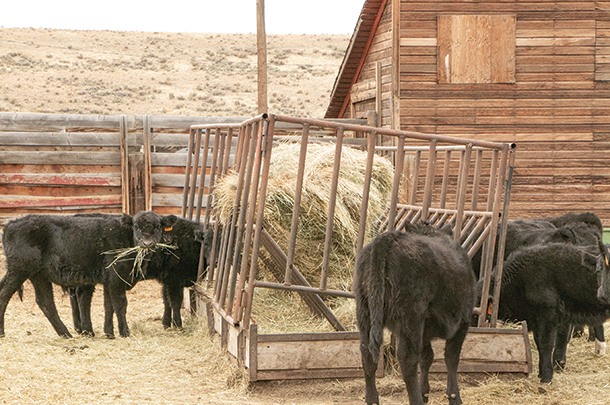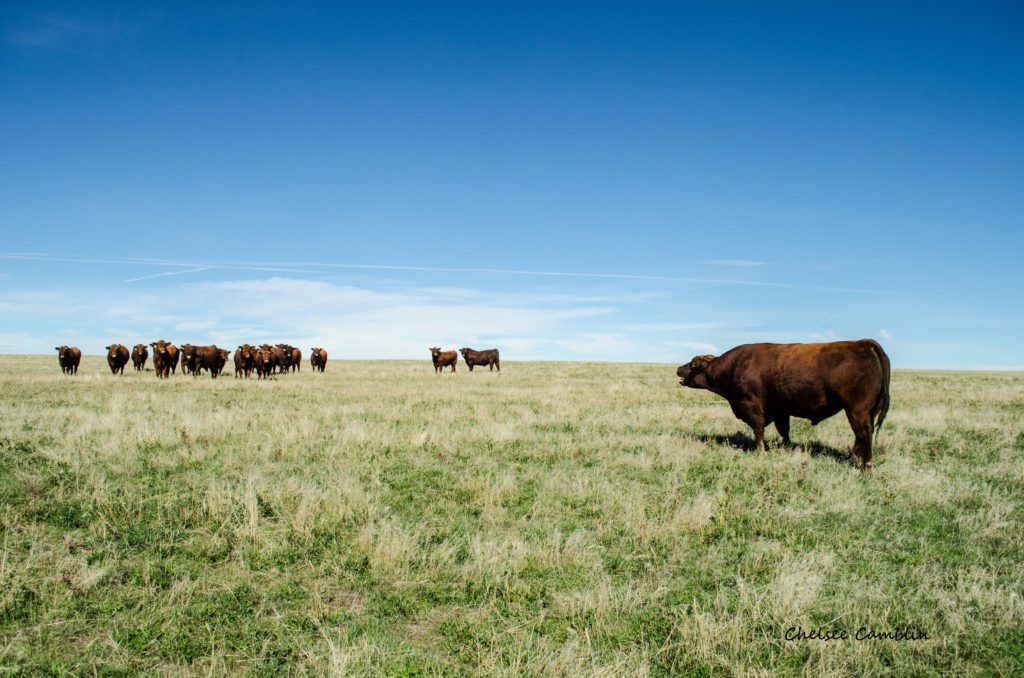Eric Bailey for Progressive Cattle
Weaning is a challenging time for cattle and their owners. Our management decisions affect calves’ response to stress, which is a contributing factor to illness.
Bovine respiratory disease (BRD) is the costliest illness affecting feedlots in the U.S. Despite many efforts to reduce BRD, about 16% of calves entering feedlots are diagnosed with BRD.
The concept of preconditioning calves on the farm or ranch of origin has been advocated throughout the beef industry for the past 50 years. Standard elements of preconditioning programs include weaning and retaining calves for 30 to 60 days, a vaccination program and deworming. Preconditioning has been marketed as a means of reducing feedlot morbidity and mortality. However, data from the National Animal Health Monitoring Service report that 50% of calves are marketed immediately following weaning. Why do more cattlemen not precondition calves before sale?
Two factors will limit the implementation of preconditioning practices. Many small farms and ranches lack the facilities to house calves and cows separately. Second, the operations lacking pre-weaning calf management are likely to struggle to implement preconditioning. I consider preconditioning the pinnacle of cow-calf production. Operations lacking a defined breeding season are likely to struggle with preconditioning. Another indicator is no castrating bull calves before weaning or implementing a vaccine program. If increasing the value of your calves is a priority, ask first if your pre-weaning management is aligned with current recommendations.
If you are preconditioning calves or are interested in implementing it, here are some recommendations based on my Ph.D. research. We weaned 3,000 calves across seven experiments, tracking their performance through weaning, preconditioning, the feedlot and the packing plant. Here are a couple of important details to note. All calves were dehorned, and steer calves were castrated before 60 days old. We simulated marketing stress in all experiments by transporting calves to a commercial auction market and holding them on the premises for 14 hours at the end of the preconditioning phase.
- Length of preconditioning period: Preconditioning programs are commonly recommended to be 30 to 60 days in length. While extended preconditioning periods may support greater weight gain and larger calves for sale, costs are also increased. In 2007, 433 calves were weaned at conventional ages and preconditioned zero, 15, 30, 45 or 60 days on the ranch of origin before shipment to the feedlot. All calves were shipped to the feedlot on a common date; thus, weaning date differed in each treatment.
Calves were weaned at approximately 190 days old. Morbidity during receiving was 2.2 times more frequent among non-preconditioned calves than preconditioned calves. There were no differences in feedlot morbidity as preconditioning length increased from 15 to 60 days, suggesting that calves benefit from ranch-of-origin preconditioning periods as short as 15 days.
Weaning calves two weeks before selling may benefit the calves but is not going to generate premiums at auction or be enough time for calves to gain weight. Research by Dr. Mark Hilton from Purdue demonstrated that two-thirds of profit in preconditioned calves was earned from an additional pound of calf sold. In his dataset, calves were preconditioned for 11 years from a single farm. The calves gained little weight during the first two weeks after weaning. Extended preconditioning periods may be necessary for producers who do not retain ownership of calves in the feedlot.
- Vaccination protocols: First, a disclaimer. I am not a veterinarian and am not trying to promote a specific vaccination for weaned calves. We vaccinated calves zero, one, two or three times during preconditioning with a modified-live product designed to protect against viral BRD-causing pathogens. There was a modest increase in BRD and drug therapy costs during preconditioning when calves were not vaccinated. However, we observed no differences in feedlot morbidity among various vaccination protocols. Feedlot morbidity was half of industry average (16%). At a modest cost ($2 per dose), vaccinating calves against viral BRD-causing pathogens is an inexpensive insurance policy.
- Weaning method: Pasture-based preconditioning programs offer an exciting alternative for producers who wish to retain ownership of their calves through the feedlot. We weaned calves in a drylot or on Flint Hill pasture in November 2011. Pasture-weaned calves gained 0.4 pound per day more than drylot-preconditioned cohorts during finishing. Also, the health of the calves was not different between the two weaning methods. If a producer plans to market their calves after preconditioning, it is essential to increase weight gain during preconditioning. Doing so allows you to capture revenue from both the market premium and the additional pounds of calf sold. A pasture-based preconditioning program will not support significant weight gain in newly weaned calves if conducted during the dormant season of the forage. However, it could be an attractive alternative to save on feed costs if ownership is retained through the feedlot.
General recommendations
Rather than debating weaning tactics (fenceline weaning, nose flaps, etc.), think about the bigger picture. Weaning methods discussed in popular press articles are meant to ease the stress of maternal separation only. It is important to ease the stress of maternal separation, and producers may have more success with one tactic over another. I have had little success with fenceline weaning, mostly because I lack the facilities to keep cows and calves apart effectively. One year, I got to wean the same set of calves three days in a row because I could not keep the cows from tearing down the fence.
Remember, there are other stressors to consider besides maternal separation. The most stressful events in a bull calf’s life are castration, weaning, transport/marketing, new environment adaptation and diet changes. Many bull calves in the U.S. have all five of those stressful events crunched into a short time frame. No wonder BRD is still the leading cause of morbidity and mortality in the feedlot.
The best advice I can give about successful weaning is to spread stressful events out over time. Take a good look at current management practices and ask if any can be improved upon to reduce calf stress around weaning. Industry-affiliated preconditioning programs follow specific guidelines for marketing a calf as preconditioned through the respective programs. Remember, to market as calf as preconditioned, it is necessary to follow industry guidelines. Following the guidelines will make your cattle eligible for any premiums generated at auction.
Do not consider the preconditioning premium as the only source of additional revenue. In Dr. Hilton’s preconditioning research at Purdue, two-thirds of the profit from a preconditioning program was from additional weight gain. Make sure calves are gaining weight after weaning. Access to a low-quality round bale and 2 to 3 pounds of supplement per head is not going to support the weight gain needed. Try to get calves to gain 2 to 2.5 pounds per day. Work with your local extension service, feed company or independent nutrition consultant to put a diet together that will be profitable.
Keep stress down, keep the plane of nutrition up, and watch calves put extra dollars in your pocket.
PHOTO: When planning on marketing calves after preconditioning, weight gain is vital to capture revenue. Photo by Lynn Jaynes.









